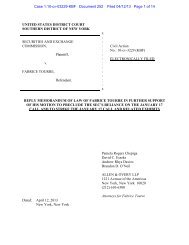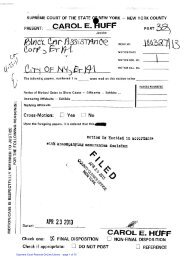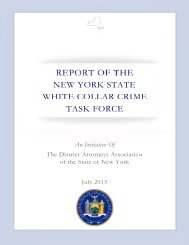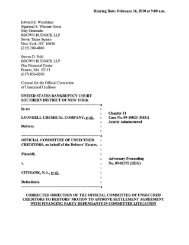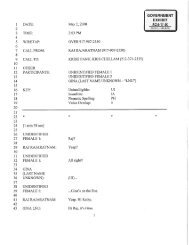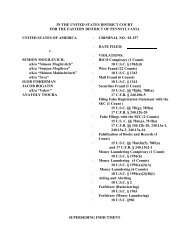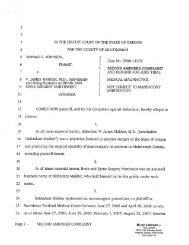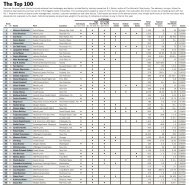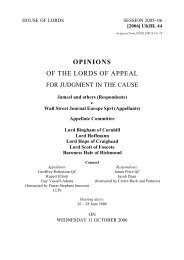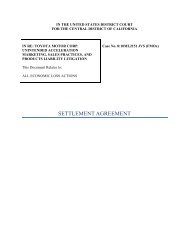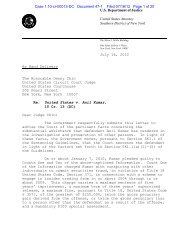Salz Review - Wall Street Journal
Salz Review - Wall Street Journal
Salz Review - Wall Street Journal
Create successful ePaper yourself
Turn your PDF publications into a flip-book with our unique Google optimized e-Paper software.
5<br />
<strong>Salz</strong> <strong>Review</strong><br />
An Independent <strong>Review</strong> of Barclays’ Business Practices<br />
same lens. The implicit and explicit government support of banks and the systemic<br />
risks they pose to financial stability make them semi-public institutions. As a result,<br />
politicians and the public believe they have the right to insist on changes. Banks need<br />
to set the highest standards to meet expectations.<br />
2.6 The public disapproval of banks generally has been exacerbated by the series of<br />
high-profile occurrences that reflected poor behaviour by some bankers – including<br />
alleged mis-selling of products, such as PPI, to some customers; attempting to<br />
manipulate LIBOR, 3 a key interest rate; and failing to comply with government<br />
sanctions. The public has been understandably shocked by some of the revelations.<br />
It takes them as confirming the view that some banks and bankers have lost any<br />
sense of social responsibility and are only out for themselves.<br />
2.7 In this context, Barclays’ behaviours have elicited significant criticism. Its business<br />
practices have been roundly questioned by regulators, politicians, the media and the<br />
wider public. Barclays’ reputational vulnerability was amplified by its large investment<br />
bank, which it has successfully built over the past 15 years, and by having a highprofile<br />
investment banker as Group Chief Executive. Investment banks, with their<br />
complex products, financial trading activities and high bonuses, have been<br />
particularly blamed for the financial crisis.<br />
2.8 For the employees at Barclays this has been a difficult time. Our meetings with them<br />
and a survey we conducted made clear that the overwhelming majority are focused<br />
on the bank’s customers and doing their best for them. They are as disappointed as<br />
anyone by some of the behaviours.<br />
2.9 In the face of this intense scrutiny and criticism, Barclays decided to set up this<br />
<strong>Review</strong>, tasking us to make recommendations as to how Barclays can rebuild trust<br />
and develop business practices which will help make it a leader among its banking<br />
peers and multinational corporates more generally. 4<br />
2.10 Our <strong>Review</strong> focuses on Barclays and the challenges it faces in achieving its<br />
objectives. However, while banks are not all the same and very different business<br />
models are adopted by different institutions, we recognise that some of the<br />
challenges facing Barclays and addressed here are industry challenges. We also<br />
recognise that Barclays is subject to real competitive pressures and will wish to set<br />
the changes to which it is committed in the context of building long-term value for<br />
its shareholders.<br />
The Need for Change<br />
2.11 In the years prior to the crisis in 2008, Barclays pursued a bold growth strategy which<br />
we describe in Section 4. About ten years ago, its ambition was to become a top-five<br />
global bank, with one third of Group profits coming from investment banking and<br />
two thirds from global retail and commercial banking (including Barclaycard). The<br />
3 London InterBank Offered Rate, a benchmark interest rate at which banks can borrow funds from other<br />
banks in the London interbank market.<br />
4 An analysis of the lessons Barclays can learn from other high-risk industries is set out in Appendix D.




